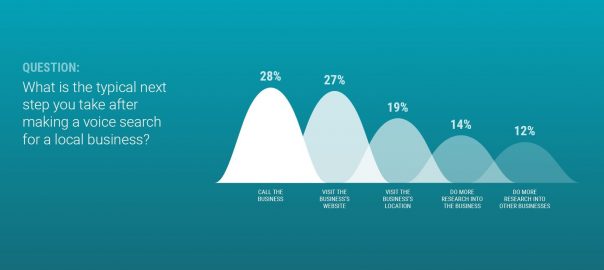— October 5, 2018
More and more consumers are using voice search to perform search engine queries, find local businesses, make purchase decisions, and more. And when consumers search for local businesses with their voices, they usually engage with those businesses the same way — by calling. Below, we’ve compiled the top statistics digital marketers need to know to succeed in tomorrow’s voice-first world.
1. 65% of 25-49 year olds speak to their voice-enabled devices at least once per day. The 25-49 year old demographic is the most likely to perform daily voice searches, followed closely by 18-24 year olds, and 50+ year olds, respectively. Though 25-49 year olds are the most active voice searchers, the 18-24 demographic is credited with helping to drive early adoption of the technology (Source: PwC).
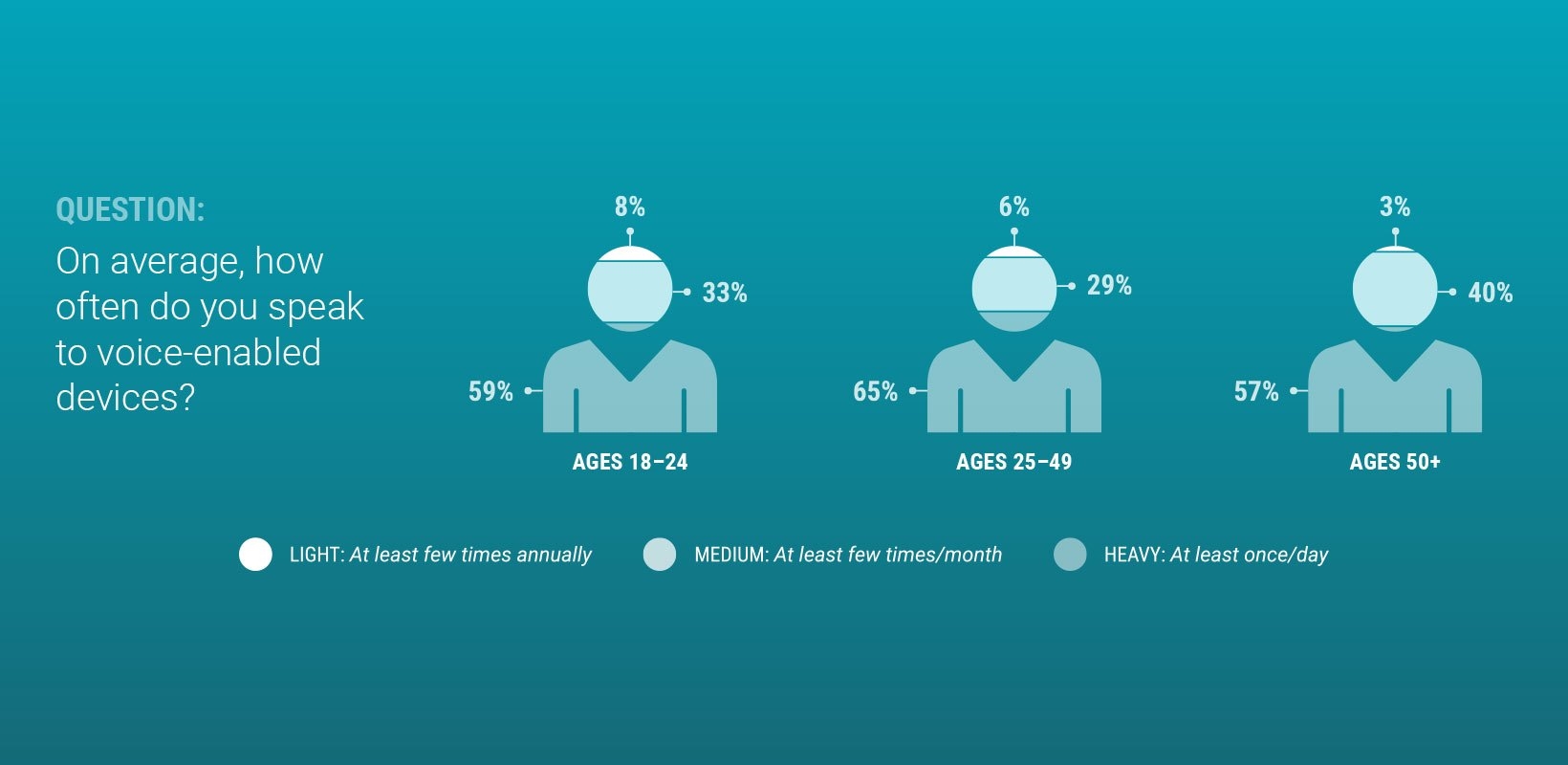
2. 61% of 25-64 year olds say they’ll use their voice devices more in the future. The 18-24 demographic mirrors this trend, with 57% saying they’ll increase their voice device usage in the coming years (Source: PwC).
3. 71% of wearable device owners predict they’ll perform more voice searches in the future. Though wearable users are the most optimistic, tablet and speaker users are not far behind (Source: PwC).
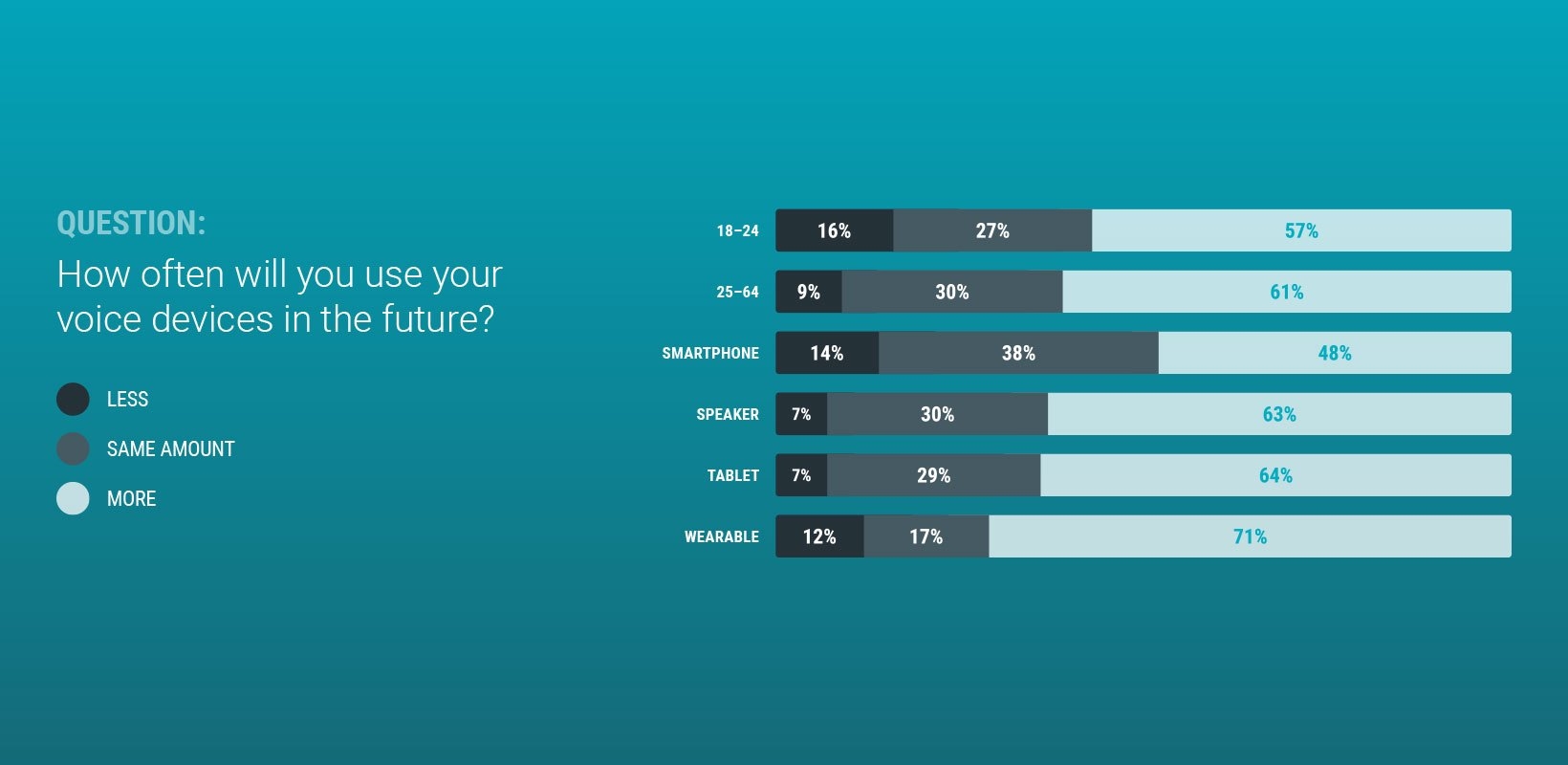
4. Half of all online searches will be voice searches by 2020. The voice search revolution will dramatically alter how consumers engage with businesses. Marketers who optimize their SEO for voice searches will gain the advantage in this new landscape (Source: ComScore).
5. 53% of consumers use their smart speaker at least once per month to find information on a local business. A substantial percentage of consumers also voice search for local businesses on their smartphones, tablets, and desktops. Because of their convenience for on-the-go customers, voice searches are often used to research and locate local businesses (Source: BrightLocal).
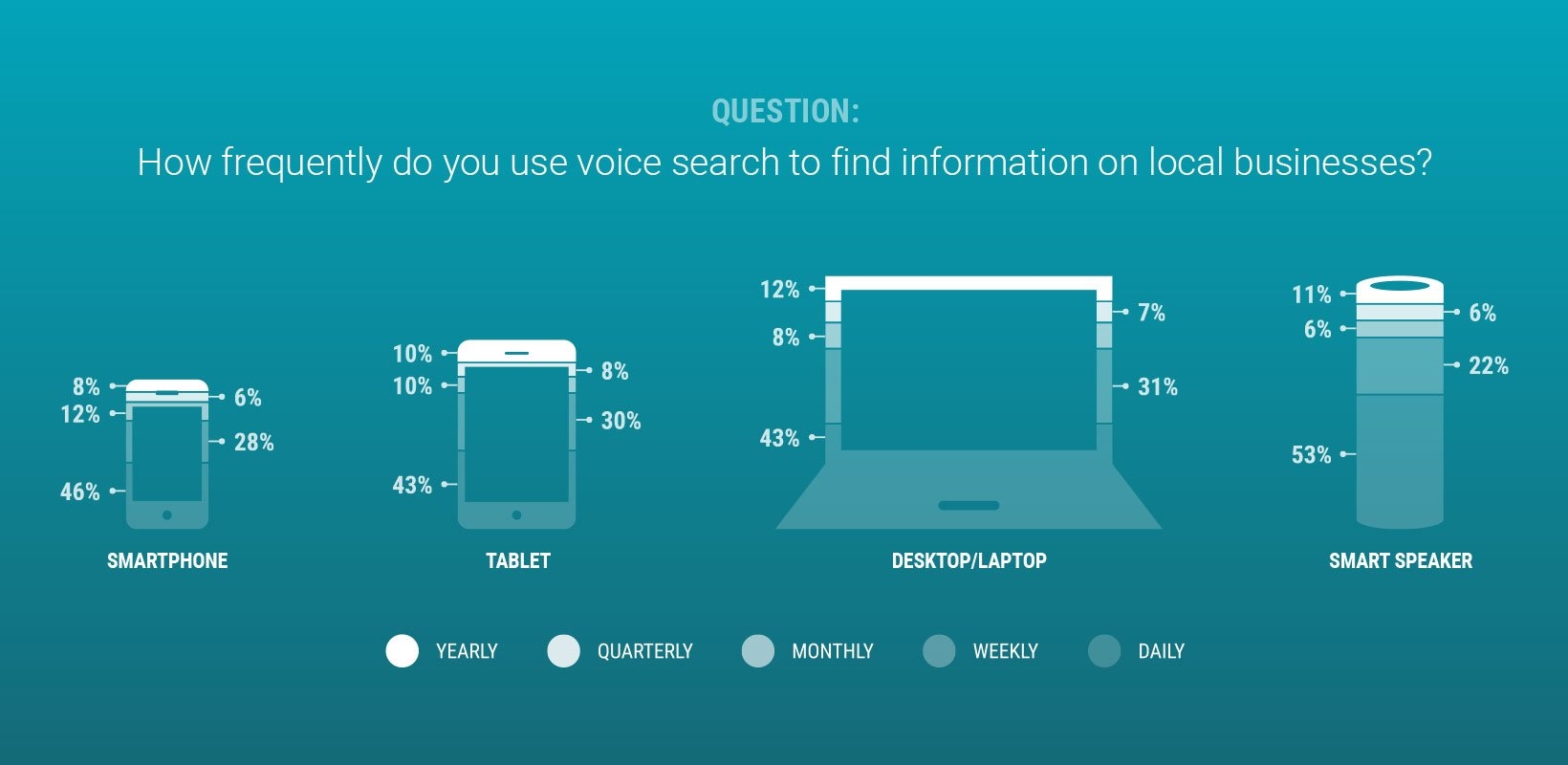
6.51% of consumers use voice search to research restaurants. This is the most commonly voice searched business, though consumers research a broad range of businesses on their voice devices, from hotels to doctors to insurance companies (Source: BrightLocal).

7. 28% of consumers go on to call the business they voice searched for. This is the most common action following a voice search, since it allows consumers to continue interacting with brands via their voices (Source: BrightLocal).
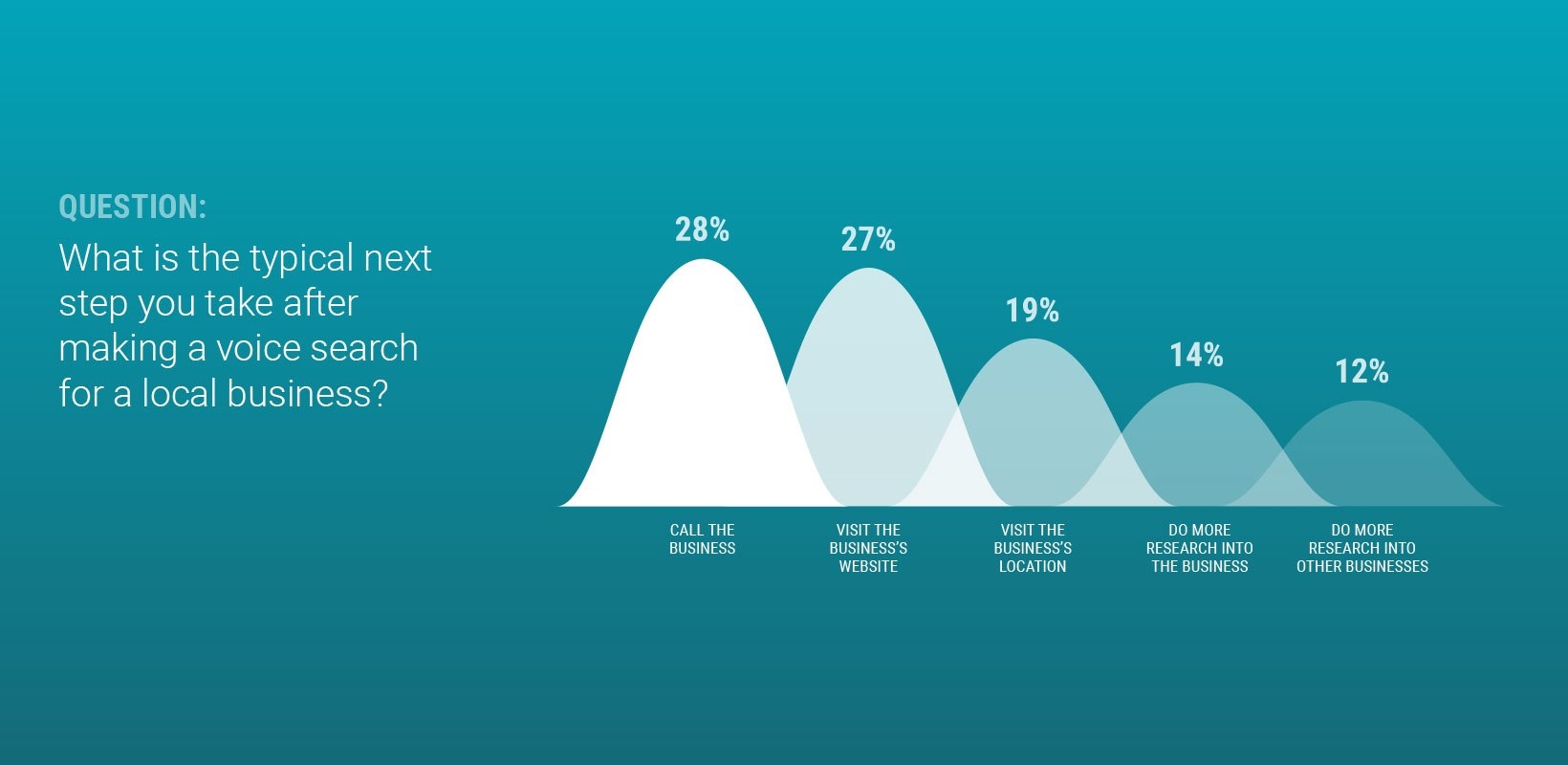
8. Calls will influence $ 1 trillion in US consumer spending this year. In a voice-first world, calls will be the most convenient way for customers to convert, driving this number even higher (Source: BIA/Kelsey).
9. Phone calls convert to 10-15x more revenue than web leads. Calls are the most valuable conversions marketers can drive from voice searches. By tracking the calls driven by your Facebook ads, you can measure your full ROI and optimize accordingly (Source: BIA/Kelsey).
10. Callers convert 30% faster than web leads. Calls provide a more immediate return on your digital marketing investment (Source: Forrester).
11. Caller retention rate is 28% higher than web lead retention rate. Driving calls from voice searches is also more profitable in the long-term — callers are more loyal than web leads (Source: Forrester).
So, How Can You Drive More Calls and Customers from Voice Search?
- Voice searches are longer than traditional text searches. Optimize your content for long-tail keywords and queries likely to be spoken aloud.
- Voice search keywords and queries differ from traditional text searches, but the same SEO principles apply. Adhere to SEO best practices to ensure you rank high.
- Optimize for local searches by providing an easily accessible phone number and address, updating your Google business listing, and adding “near me” in the title tags, meta description, and anchor text.
- Mine calls to your business for the questions consumers ask before buying. Add them to your website to improve SEO and CRO.
- Analyze calls from voice search to determine if you should retarget the caller and with what ad campaign.
- Analyze call conversations to measure how well each location converts callers to customers — and what tactics work best — and share best practices.
Are you ready for the voice search revolution? Download our Digital Marketer’s Guide to Voice Search to learn more tips to prepare.
Digital & Social Articles on Business 2 Community
(75)
Report Post